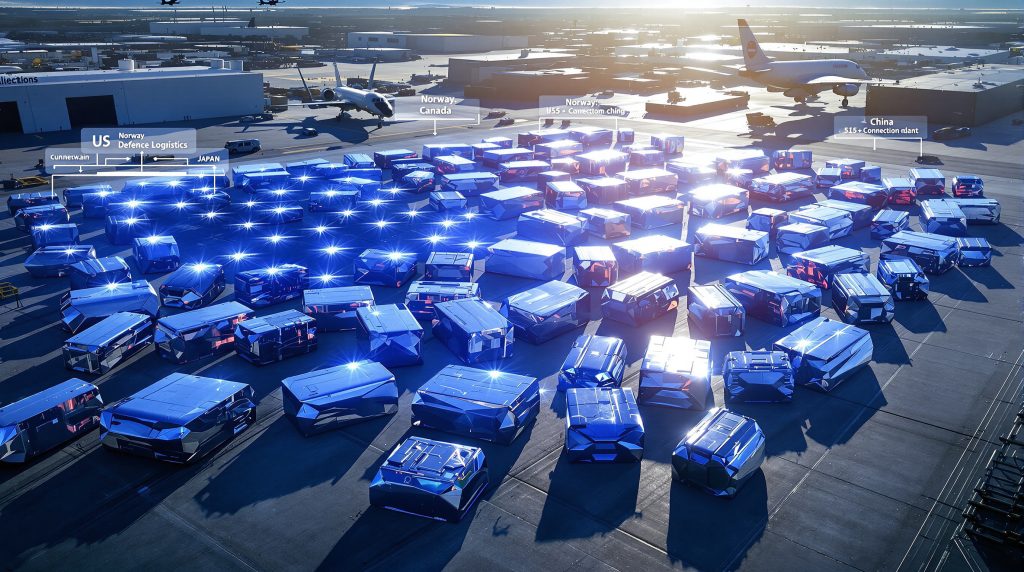US DLA Cobalt Acquisition: Strategic Stockpiling for National Security
In a significant move to secure critical materials for defense applications, the United States Defense Logistics Agency (DLA) has launched a major cobalt acquisition initiative. This strategic program represents a pivotal shift in US resource policy, marking the first substantial cobalt stockpiling effort in over three decades. With potential expenditures reaching up to $500 million over five years, this initiative underscores the growing recognition of cobalt as a strategically vital material for national security.
What Is the US DLA Cobalt Acquisition Program?
The US Defense Logistics Agency has established a comprehensive program to acquire up to 7,500 tonnes of cobalt through a structured contract framework. Initially set to conclude on August 29, 2025, the DLA has extended the opportunity deadline to September 11, 2025, allowing potential suppliers additional time to prepare their submissions.
Key Program Details
The program operates under an Indefinite Delivery, Indefinite Quantity (IDIQ) contract model, providing flexibility for the government while ensuring consistent supply availability. Key specifications include:
- A guaranteed minimum purchase of $2 million upon contract award
- Maximum ceiling value of $500 million over five years
- Fixed pricing structure to provide market stability
- Delivery timeframe spanning five years from contract initiation
- Strong preference for a single supplier rather than multiple vendors
This structure allows the DLA to make an initial guaranteed purchase while retaining the option to place multiple delivery orders throughout the contract period without exceeding the $500 million ceiling.
The focus specifically targets aerospace-grade cobalt suitable for applications in rotating parts, reflecting the strategic importance of this material in defense systems. By implementing fixed pricing, the program aims to provide stability for both government procurement planning and supplier operations.
Why Is the US Government Stockpiling Cobalt?
Strategic Defense Imperatives
The DLA has explicitly stated that the objective of this acquisition program is "to reduce the risk of availability in the rotating grade cobalt in the aerospace and defense supply chain." This declaration highlights several critical vulnerabilities in the current supply landscape:
- Supply Chain Vulnerabilities: The US currently lacks domestic primary production or refining capacity for cobalt
- Critical Applications: Cobalt is essential for aerospace components, particularly in jet engines
- Geopolitical Considerations: Growing global competition for critical minerals creates supply risks
- Industrial Base Protection: Supporting specialized metallurgical capabilities for defense applications
While commercial considerations exist, market participants have emphasized that the program is primarily motivated by military and security concerns rather than economic factors. As one industry insider noted, the extensive budgetary approval process makes market timing impractical as a primary objective for such acquisitions.
Critical Applications in Defense
Cobalt's unique properties make it irreplaceable in several defense-critical applications:
- Superalloys for Aerospace: Essential for jet engine components that must withstand extreme temperatures
- High-Performance Magnets: Used in guidance systems, radar, and other advanced military electronics
- Wear-Resistant Alloys: Critical for components in rotary aircraft and other defense platforms
- Corrosion-Resistant Materials: Necessary for naval applications and maritime defense systems
The specialized nature of aerospace-grade cobalt, particularly for rotating parts in jet engines, creates additional supply challenges. The stringent certification requirements further limit the pool of qualified suppliers, intensifying the strategic imperative for secured access.
How Does the Contract Structure Work?
Acquisition Framework
The DLA has structured this procurement as an IDIQ contract, providing significant flexibility while establishing clear parameters:
- Initial Guaranteed Purchase: $2 million minimum purchase upon contract award
- Delivery Orders: Multiple orders permitted throughout the five-year period
- Ceiling Value: Total purchases capped at $500 million
- Fixed Pricing: Stable pricing throughout the contract period
- Single Supplier Preference: DLA has indicated preference for awarding to one company
This framework balances the government's need for flexibility with suppliers' requirements for predictability, creating a structured approach to building the strategic stockpile over time.
The IDIQ model provides particular advantages for strategic materials acquisition, allowing for responsive purchasing based on market conditions, budget availability, and evolving defense requirements without committing to specific quantities upfront beyond the guaranteed minimum.
Supplier Requirements
Potential suppliers must meet rigorous qualification standards to participate in this program:
- Demonstrated capability to provide aerospace-grade cobalt meeting strict specifications
- Verified certification for use in rotating parts applications
- Letters of support from aerospace manufacturers for brands being qualified
- Established performance history in aerospace applications
- Compliance with all applicable regulatory requirements
The DLA has significantly narrowed the pool of qualified brands in the contract extension, requiring at least two letters of support from aerospace alloy manufacturers for brands in the qualification process for aerospace rotating parts applications.
Which Cobalt Sources Are Eligible for Delivery?
Approved Supplier Specifications
The DLA has specified a limited number of approved brands eligible for delivery under this contract:
- Vale Port Colborne rounds (Canadian origin)
- Glencore's Nikkelverk cut cathode (Norwegian production)
- Sumitomo Metal Mining (SMM) cut cathode (Japanese production)
Notably, Vale Long Harbor rounds were excluded from the deliverable options in the contract extension. Industry sources attribute this restriction to the three approved brands already having established certification for superalloy usage in rotating parts.
Material of Chinese origin faces significant barriers to inclusion due to the current 35% US import tariff impact analysis on Chinese cobalt metal, effectively removing a major global production source from consideration.
Qualification Process
The qualification process for cobalt brands involves multiple rigorous steps:
- Certification for Specific Applications: Material must be certified for use in superalloys for rotating parts
- Industry Validation: At least two aerospace manufacturers must provide support letters
- Quality Verification: Stringent testing to ensure material meets aerospace specifications
- Provenance Documentation: Clear chain of custody from mining through refining
- Performance History: Demonstrated track record in aerospace applications
These requirements significantly narrow the pool of potential suppliers, reflecting the critical nature of the materials for defense applications and the non-substitutable performance requirements in aerospace systems.
What Impact Will This Have on Global Cobalt Markets?
Market Implications
The DLA's acquisition program is expected to have several significant impacts on global cobalt production markets:
- Tightened Supply: Reduction in availability of alloy-grade material for commercial applications
- Price Support: Sustained demand creating price floors for premium cobalt products
- Widening Differentials: Growing price gap between alloy-grade and standard-grade material
- Supply Chain Shifts: Increased focus on non-Chinese supply channels for critical applications
Industry analysts anticipate that while short-term effects may be limited to positive sentiment, the longer-term impacts (6-12 months) could significantly tighten the alloy market, particularly supporting cut cathode prices in European markets.
Price Trends and Market Response
Market response has already been observed following the announcement of the acquisition program:
- Fastmarkets' daily price assessment for cobalt, alloy grade, in-whs Rotterdam reached $18.25-20.00 per lb on September 3, 2025
- This represented an increase from $18.00-19.80 per lb on August 22, 2025, when the contract opportunity was first announced
- Alloy-grade material has maintained a premium over standard-grade cobalt since late 2022, reflecting the sustained contrasting availability environments
As one market trader observed: "Short term, I don't expect the DLA news to impact the market other than sentiment, which is positive. But going out 6-12 months, this really tightens up the alloy market, which should lend a lot of support to cut cathodes in Europe."
The smaller pool of approved brands for alloy applications compared to other grades creates structural support for this premium pricing environment, a dynamic that the DLA acquisition will likely reinforce.
When Will US Domestic Production Enter the Supply Chain?
Emerging Domestic Capabilities
While the US currently lacks domestic primary production or refining capacity for cobalt, efforts are underway to develop this capability:
- EVelution Energy: A US critical minerals processor targeting alloy-grade cobalt production
- Projected Timeline: Full operational status expected by 2027
- Supply Agreements: Letter of intent signed in April 2025 to supply "substantially all" cobalt metal and sulfate production to Mitsui & Co once operational
- Certification Requirements: Domestic material would need to complete certification for rotating parts applications before qualifying for DLA delivery
This emerging production capability could potentially become a delivery option toward the end of the decade, provided the material successfully completes the necessary certification processes for aerospace applications. This development aligns with broader US mineral order objectives to reduce dependence on foreign supply chains for critical minerals.
Bridging the Gap
Until domestic production comes online, the US faces several challenges in securing adequate cobalt supplies:
- Reliance on Allies: Dependence on Canadian, Norwegian, and Japanese production
- Limited Supplier Base: Few qualified producers meeting aerospace certification requirements
- Certification Barriers: Lengthy process for qualifying new material sources
- Competing Demand: Growing commercial aerospace sector recovery post-pandemic
These factors underscore the strategic importance of the DLA's stockpiling initiative as a buffer against supply disruptions in the interim period before domestic production capabilities mature.
What Are the Challenges in Cobalt Supply Security?
Supply Chain Vulnerabilities
The cobalt supply chain presents several significant vulnerabilities for US defense applications:
- Limited Qualified Suppliers: Few producers meet the stringent requirements for aerospace-grade material
- Production Concentration: Global refining capacity heavily concentrated in China
- Tariff Impacts: 35% US tariff on Chinese-origin cobalt restricts supply options
- Dual-Use Competition: Growing demand from commercial sectors for the same materials
- Certification Hurdles: Lengthy process to qualify new suppliers or material sources
These vulnerabilities create systemic risks for defense supply chains, particularly as demand grows from both defense and commercial sectors following the pandemic-related contractions in aerospace manufacturing.
Strategic Considerations
Addressing these challenges requires a comprehensive approach:
- Diversified Sourcing: Cultivating multiple supply channels from allied nations
- Domestic Capability Development: Supporting the establishment of US-based production
- Strategic Reserves: Building buffer stocks to mitigate short-term disruptions
- Certification Streamlining: Exploring ways to accelerate qualification for new sources
- International Cooperation: Partnering with allies on strategic mineral reserve initiatives
The DLA's acquisition program represents one element of this multi-faceted approach, providing immediate supply chain assurance while longer-term solutions develop.
How Does This Compare to Historical DLA Activities?
Historical Context
The current cobalt acquisition represents a significant departure from recent DLA activities:
- First major cobalt acquisition program in over three decades
- Reversal from previous stockpile reduction efforts to active accumulation
- Larger scale than typical material purchases in recent years
- Longer contract timeframe, indicating strategic rather than tactical focus
- More specific material qualification requirements than historical purchases
This shift reflects evolving perspectives on critical minerals and their strategic importance to national security, particularly as global competition intensifies for these resources.
Historically, the United States maintained substantial strategic mineral reserves during the Cold War era, but many of these stockpiles were reduced or eliminated in the 1990s and early 2000s as geopolitical tensions eased and global markets appeared more stable.
The return to active stockpiling represents a recognition of new supply vulnerabilities in an era of renewed strategic competition and complex global supply chains.
What Are the Broader Implications for Critical Minerals Policy?
Policy Framework Evolution
The DLA's cobalt acquisition program reflects a broader evolution in US critical minerals strategy:
- Growing recognition of minerals as strategic assets essential to national security
- Shift from market-based approaches to more active government intervention
- Integration of supply chain security into broader defense industrial base considerations
- Greater coordination between defense procurement and industrial policy
- Emphasis on reducing dependencies on potentially adversarial suppliers
This evolution represents a more comprehensive approach to resource security, moving beyond traditional market mechanisms to ensure access to materials essential for defense capabilities.
The program aligns with wider policy initiatives to strengthen domestic supply chains, reduce foreign dependencies, and ensure resource availability for both defense and critical infrastructure applications. Similar approaches may emerge for other critical minerals facing comparable supply challenges.
FAQ: US DLA Cobalt Acquisition Program
Why is cobalt considered strategically important?
Cobalt possesses unique properties that make it irreplaceable in certain defense applications, particularly in aerospace components that must withstand extreme temperatures and stresses. Its use in superalloys for jet engine rotating parts represents a critical vulnerability if supplies are disrupted, as these components cannot function with substitute materials without significant performance compromises.
How much of the global cobalt market does this purchase represent?
The potential 7,500-tonne acquisition over five years represents a significant portion of the global alloy-grade cobalt market, particularly considering the limited pool of qualified suppliers outside China. While modest compared to total global cobalt production, the focus on specific high-quality grades creates a substantial impact in that specialized segment.
Will this acquisition affect commercial cobalt markets?
Yes, industry analysts anticipate the DLA purchase will tighten supply for alloy-grade cobalt, potentially driving prices higher and widening the premium over standard-grade material. The impact will likely be most pronounced in European markets, where cut cathode suppliers are concentrated. Commercial aerospace manufacturers may face increased competition for these specialized materials.
What happens if domestic production comes online during the contract period?
New domestic suppliers like EVelution Energy could potentially qualify as suppliers toward the end of the contract period, provided their material meets the stringent certification requirements for aerospace applications. This would require completing the full qualification process, including obtaining support letters from aerospace manufacturers. The DLA contract structure allows flexibility to incorporate new qualified suppliers as they emerge.
Is this acquisition primarily motivated by economic or security concerns?
According to market participants, the acquisition is primarily driven by military and security considerations rather than economic factors. The lengthy budgetary approval process makes market timing impractical as a primary objective. The explicit goal of reducing "risk of availability in the rotating grade cobalt in the aerospace and defense supply chain" underscores the security focus of this initiative.
Strategic Significance of the DLA Cobalt Initiative
The DLA's cobalt acquisition program represents a watershed moment in US critical minerals policy, signaling a fundamental shift in how strategic materials are managed for national security. By committing up to $500 million for cobalt purchases over five years, the US government is taking concrete steps to address vulnerabilities in defense supply chains that have developed over decades of globalization and market concentration.
This initiative demonstrates several important policy developments:
- Recognition of minerals as strategic assets rather than simple commodities
- Willingness to make significant investments in supply chain security
- Focus on specialized material grades essential for defense applications
- Balancing immediate security needs with long-term domestic capability development
- Integration of material acquisition into broader industrial base resilience efforts
As global competition for critical minerals intensifies, the DLA's approach may serve as a template for addressing vulnerabilities across other strategic materials. The emphasis on non-Chinese supply sources, coupled with support for emerging domestic production capabilities, reflects a comprehensive strategy that balances immediate security needs with longer-term resilience objectives.
The program also highlights the growing convergence between national security and industrial policy, with material acquisition increasingly viewed through the lens of broader economic and security resilience rather than simple cost optimization.
For industry stakeholders, the DLA initiative signals long-term government commitment to specialized material streams, potentially creating sustainable markets for high-grade materials that might otherwise face challenging economics in purely commercial applications. This government support may ultimately strengthen the industrial base for these specialized materials, benefiting both defense and commercial applications.
Ready to Gain Early Insight into Major Mining Discoveries?
Discover how proprietary technology identifies significant mineral discoveries on the ASX before the broader market with Discovery Alert's Discovery IQ model, transforming complex data into actionable investment insights. Explore why historic discoveries can generate substantial returns by visiting Discovery Alert's dedicated discoveries page and position yourself ahead of the market.




